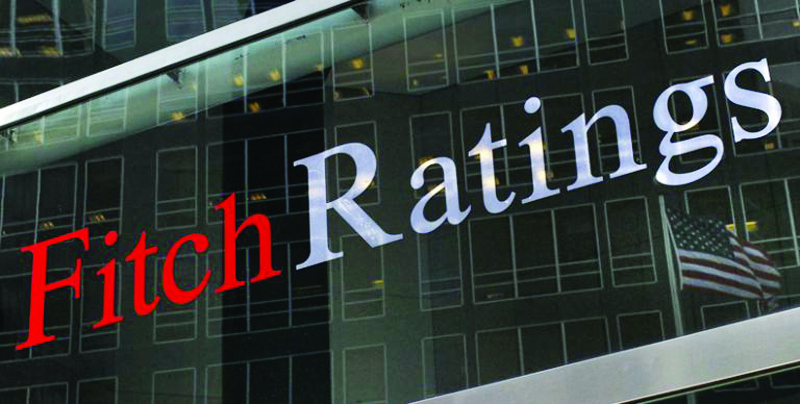HONG KONG: Fitch Ratings has revised the outlook on Kuwait's Long-term Foreign-Currency Issuer Default Rating (IDR) to negative from stable and affirmed the IDR at 'AA'.
Key rating drivers
The revision of the outlook reflects near-term liquidity risk associated with the imminent depletion of liquid assets in the General Reserve Fund (GRF) in the absence of parliamentary authorization for the government to borrow. This risk is rooted in political and institutional gridlock that also explains the lack of meaningful reforms to tackle double-digit fiscal deficits and the expected weakening of Kuwait's fiscal and external balance sheets, although these will remain among the strongest of Fitch-rated sovereigns.
Without passage of a law permitting new debt issuance, the GRF could run out of liquidity in the coming months without further measures to replenish it. Depletion of GRF liquidity would sharply limit the government's ability to make good on its spending obligations and could result in significant economic disruption. Our base case is that government will replenish the GRF to avoid depletion even without any new legislation by parliament, and that debt service (about KD 400 million or 1 percent of GDP in 2021) would in any case continue in a timely manner. Nevertheless, a degree of uncertainty remains.
The authorities have shown commitment to avoiding a liquidity crisis and have flexibility to take extraordinary measures, but the timing of a sustainable funding solution remains unclear. In August, parliament passed legislation removing the automatic requirement to transfer 10 percent of revenue from the GRF into the much larger Future Generations Fund (FGF). This allowed for the reversal of the transfer for the fiscal year ending March 2019 (FY18), and followed the purchase of liquid assets from the GRF by the FGF. The GRF still has a broad range of illiquid assets that could also be transferred to the FGF, including the Kuwait Petroleum Corporation (KPC).
We expect the general government deficit to widen to about KD 6.7 billion (20 percent of GDP) in FY20, including in revenue the estimated investment income of the Kuwait Investment Authority (KIA), which is not officially disclosed and mostly relates to the FGF. We expect revenues to fall 33 percent to a little over KD 14 billion (42 percent of GDP), driven by lower oil prices and production.
Spending will be in line with the previous fiscal year at KD 21 billion (62 percent of GDP), slightly below the final budget. The government allocated a total of KD 740 million (less than two percent of GDP) in additional spending to fight the coronavirus and support the private sector, which was offset by savings elsewhere, including lower subsidies, which vary with oil prices.
Fiscal deficits will likely remain in the double digits in the medium to long term and lead to a gradual but steady deterioration of Kuwait's balance-sheet strengths, barring significant fiscal reforms or a rebound in global oil demand. We expect a fiscal deficit of about KD 7.5 billion (21 percent of GDP) in FY21, assuming an average oil price of $45/bbl and average production of 2.4 million bbl/day.
Under the same assumptions, the recent draft government budget plans for a broad-based increase in spending to KD 23 billion (about 65 percent of GDP), but we expect that the actual spending increase will be lower. We estimate that at current oil production levels, oil prices would need to average $80/bbl for the budget to be in balance.
Rating drivers
Kuwait's 'AA' IDRs also reflect the following key rating drivers. Kuwait's public sector balance sheet will likely remain among the strongest of any Fitch-rated sovereign, even assuming little fiscal reform and no recovery in oil prices or production. We estimate the foreign assets of the KIA, mostly in the FGF, at around $581 billion at end-2020, accounting for the bulk of Kuwait's sovereign net foreign asset position of 652 percent of GDP.
We estimate that the KIA total likely increased on the back of strong financial returns in 2020, despite drawdowns from the GRF. Government debt/GDP is among the lowest among Fitch-rated sovereigns, at around 17 percent in 2020, and passage of the debt law allowing KD 20 billion of borrowing by the central government could take this to 50-60 percent, just above the median for 'AA' sovereigns.
Kuwait's bank and non-bank private sectors are net external creditors and major investors in the rest of the region, reflecting relatively muted domestic growth prospects. This provides support to the current account balance and Kuwait's net international investment position, which we estimate at 675 percent of GDP in 2020. Kuwait's current account has been in surplus in all but two of the past 20 years.
Kuwait's fiscal and external metrics are particularly sensitive to changes in oil prices and production. We estimate that a $10/bbl change in the average oil price from our baseline assumption would shift Kuwait's fiscal balance by around 6 percent of GDP. An additional 100,000 bbl/day of oil production would impact the fiscal balance by around 1.5 percent of GDP.
We expect Kuwait's economy to stage a mild economic recovery this year as the dual shocks of oil production cuts and the coronavirus begin to fade. We estimate that real GDP contracted by about 7 percent in 2020, with the oil sector contracting by 9 percent and the non-oil sector by 4 percent. As global oil demand recovers and OPEC production quotas are phased out, there is potential for Kuwait to gradually raise output towards current production capacity of 3.1 million bbl/day (with KPC planning to expand capacity to 3.5 million bbl/day by 2025). The commissioning of refinery upgrades, KPC's clean fuels project and higher gas production could also support growth in 2021-2022.










